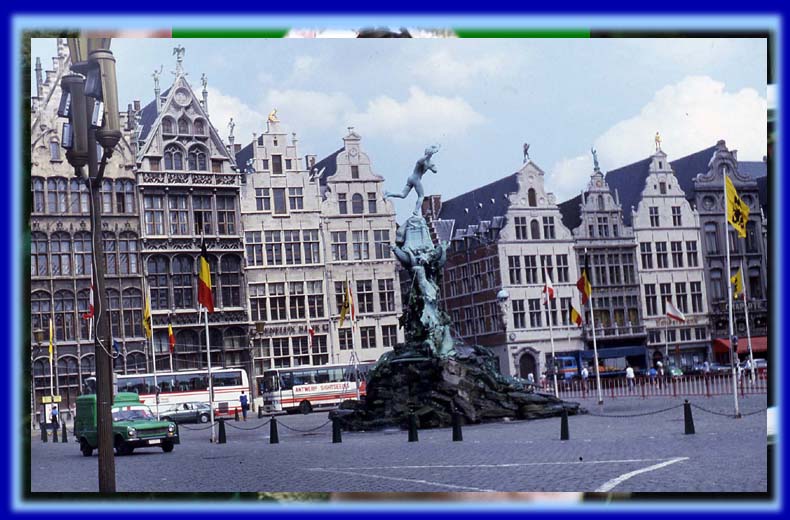 |
The town square in Antwerp. Note the mediaeval guild houses, in typical Flemish style.
Many towns in the North of Belgium (Flanders) have similar, characteristic architecture. |
|
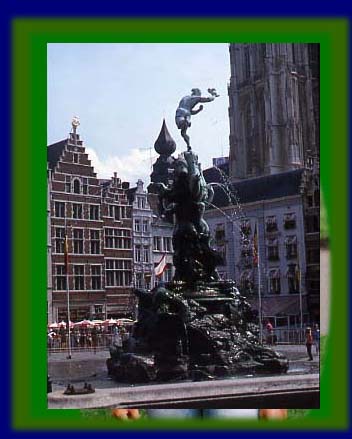 |
The statue in Antwerp town square. This illustrates the legend of the foundation of
the town. A young man was journeying in the area and met a fierce giant. They fought, and
the young man won by cutting the giant's hand off. He then saw in a vision that he was to
throw the severed hand, and where it landed found a town. He did, and named the town
Antwerp, which is Flemish for `hand throw'. |
|
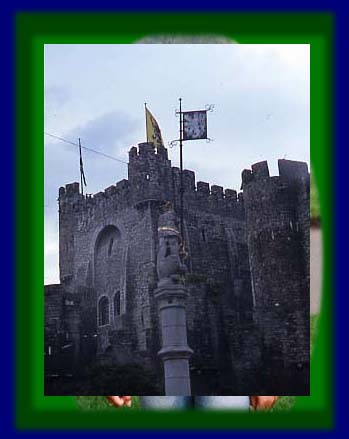 |
The castle in Gent. The centre of Gent is a wonderfully preserved wealthy merchant
town, with many buildings dating from the 15th and 16th centuries. |
|
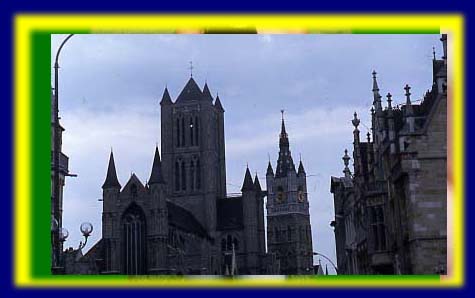 |
St Michael's Cathedral, Gent. This is a typical grand Flemish church, in the Catholic
tradition. The interiors are often very ornate. |
|
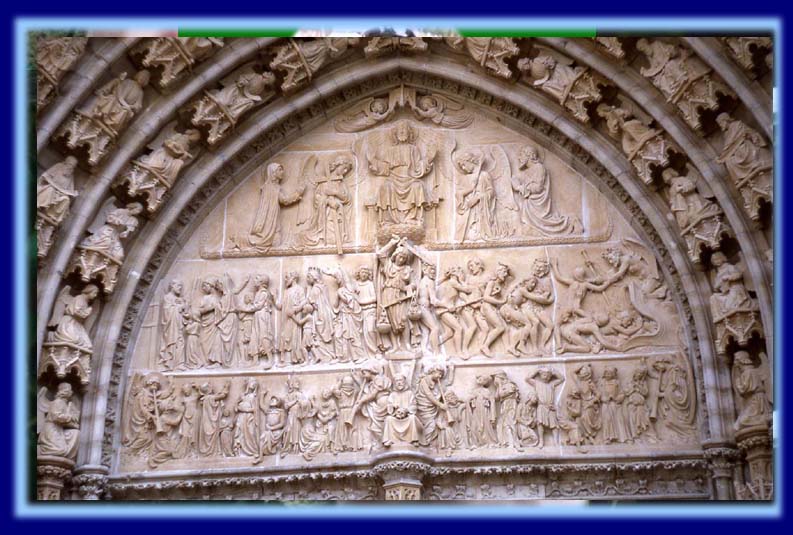
Detail of the carvings over the entrance to the cathedral in Antwerp. Note the statues
of saints following the line of the arch. The main carvings are in haut-relief on the
stone facing of the cathedral, showing superb skill and craftsmanship. One can easily
imagine the impression it must have made on worshippers in the middle ages. |
Detail of the carvings over the entrance to the cathedral in Antwerp. Note the statues
of saints following the line of the arch. The main carvings are in haut-relief on the
stone facing of the cathedral, showing superb skill and craftsmanship. One can easily
imagine the impression it must have made on worshippers in the middle ages. |
|
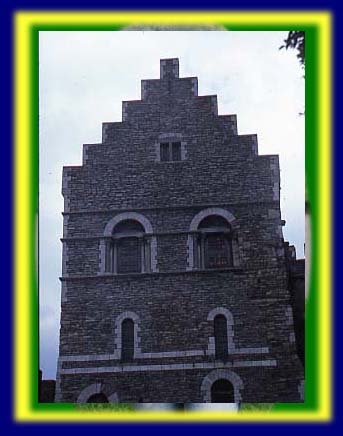 |
Mediaeval merchant's house in Gent. Note the stepped gable end, a style characteristic
of early Dutch and Flemish architecture. Houses such as this were often built by canals,
so the merchants could unload their goods directly from the river into their houses where
they would be made ready for sale. The family lived in the upper rooms. |
|
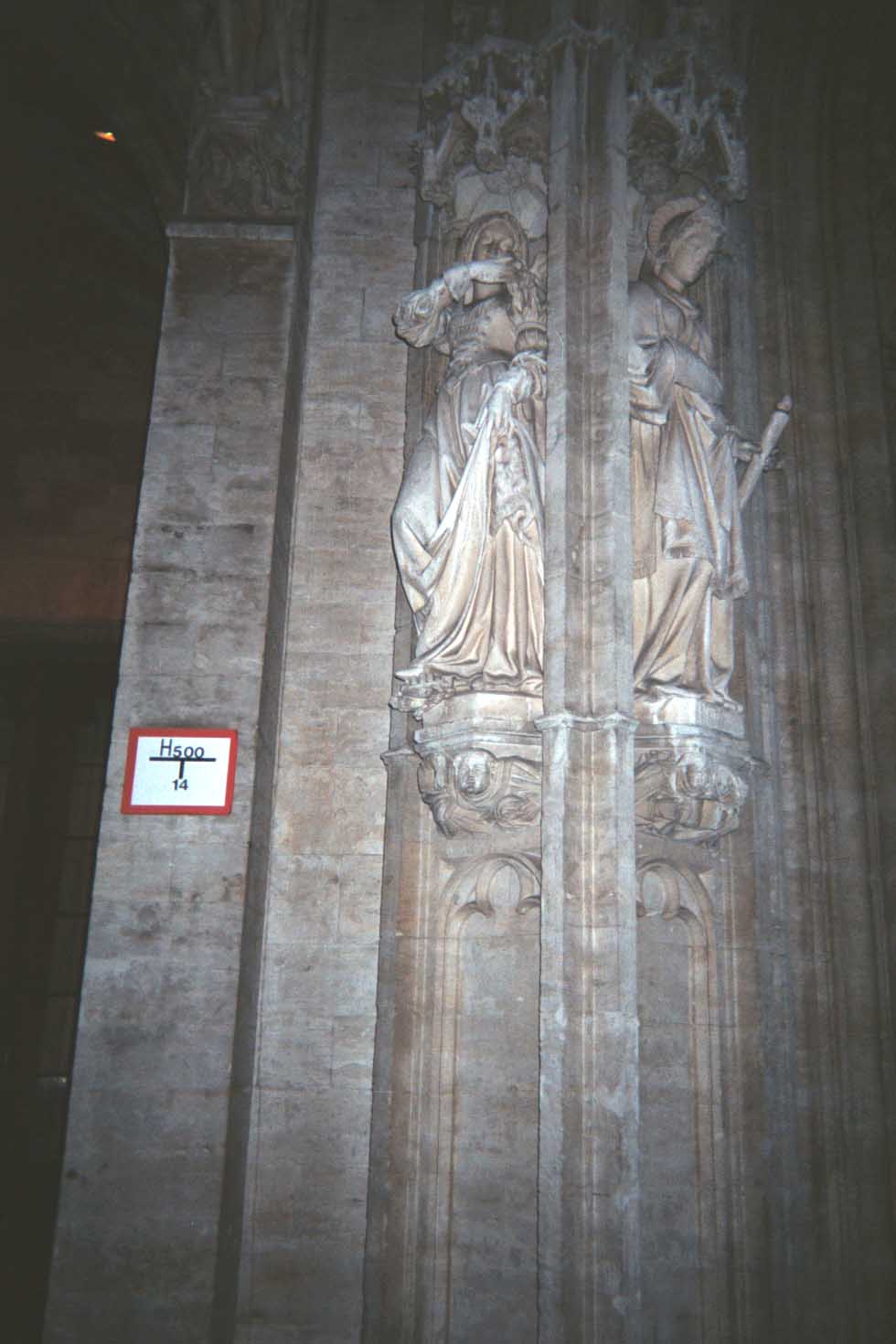 |
This shows just two of the hundreds
of statues which decorate the town hall in Brussels. The
girl on the left is holding a falcon. It is incredible
to think that there are hundreds of statues like this on
this one building alone.
|
|
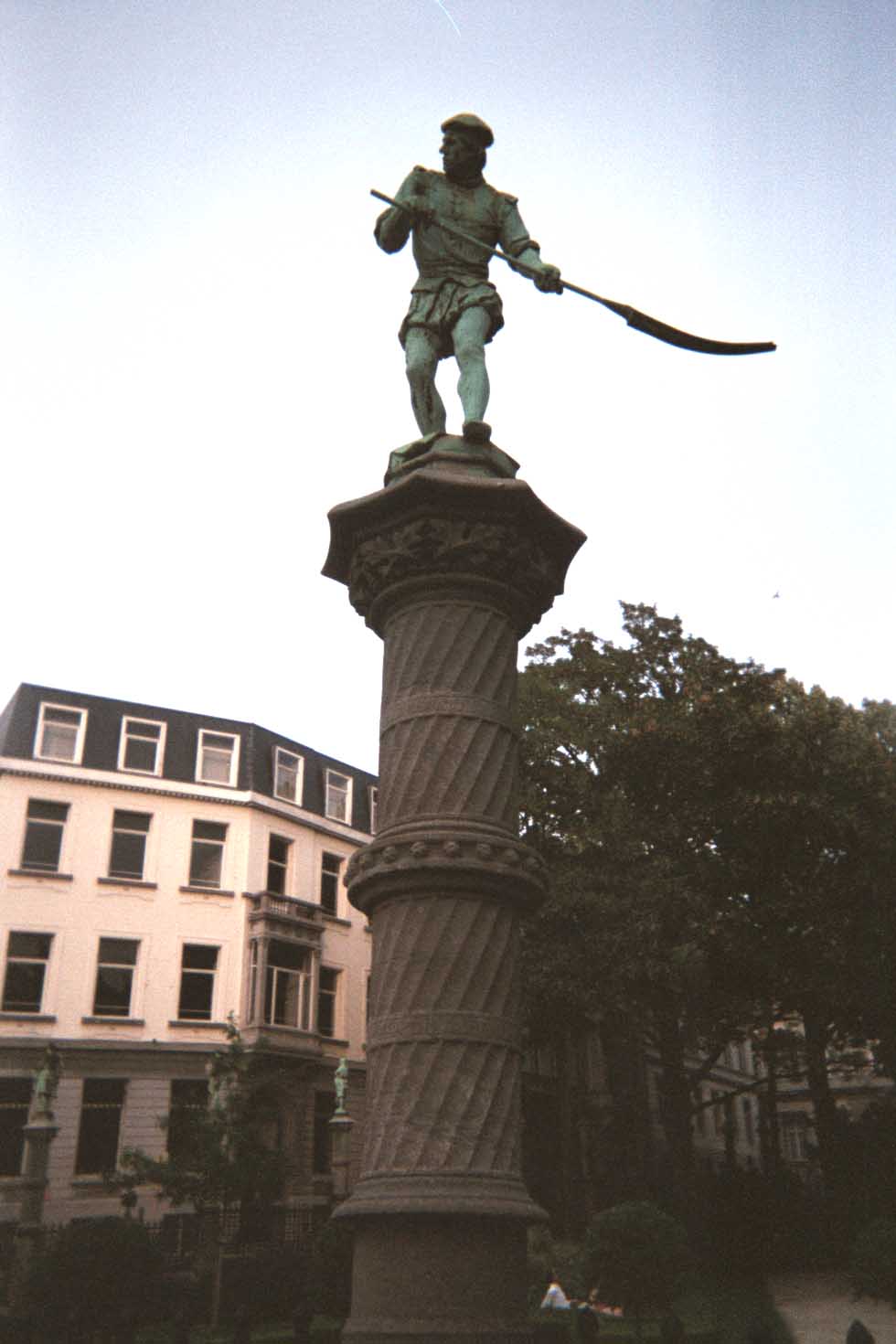 |
The Place du Petit Sablon is a square
in Brussels, in the centre of which is a garden
commemorating some of the great men of learning of the
Enlightenment in the sixteenth century. Surrounding the
square are dozens of statues like the one illustrated
below, each depicting a craft or trade.
|
|
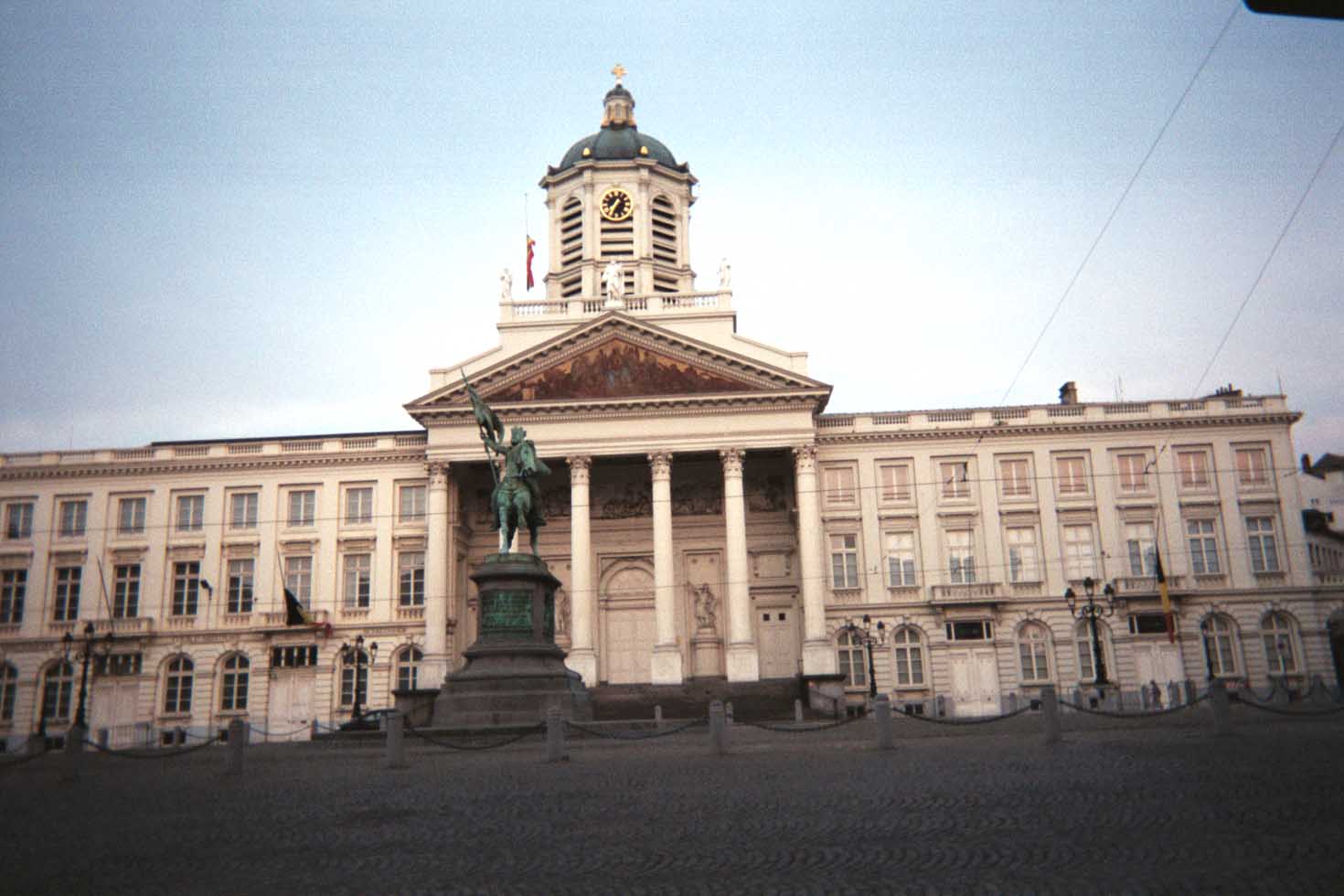 |
The Chapel of the Belgian Royal
Palace in Brussels. The Royal Palace is nineteenth
century; Belgium only came into existence as a separate
country in 1839. The statue in the foreground is of
Godfrey of Bouillon. He was a great leader in the
Crusades and was styled the first `King of Jerusalem';
he died in 1100. |
|
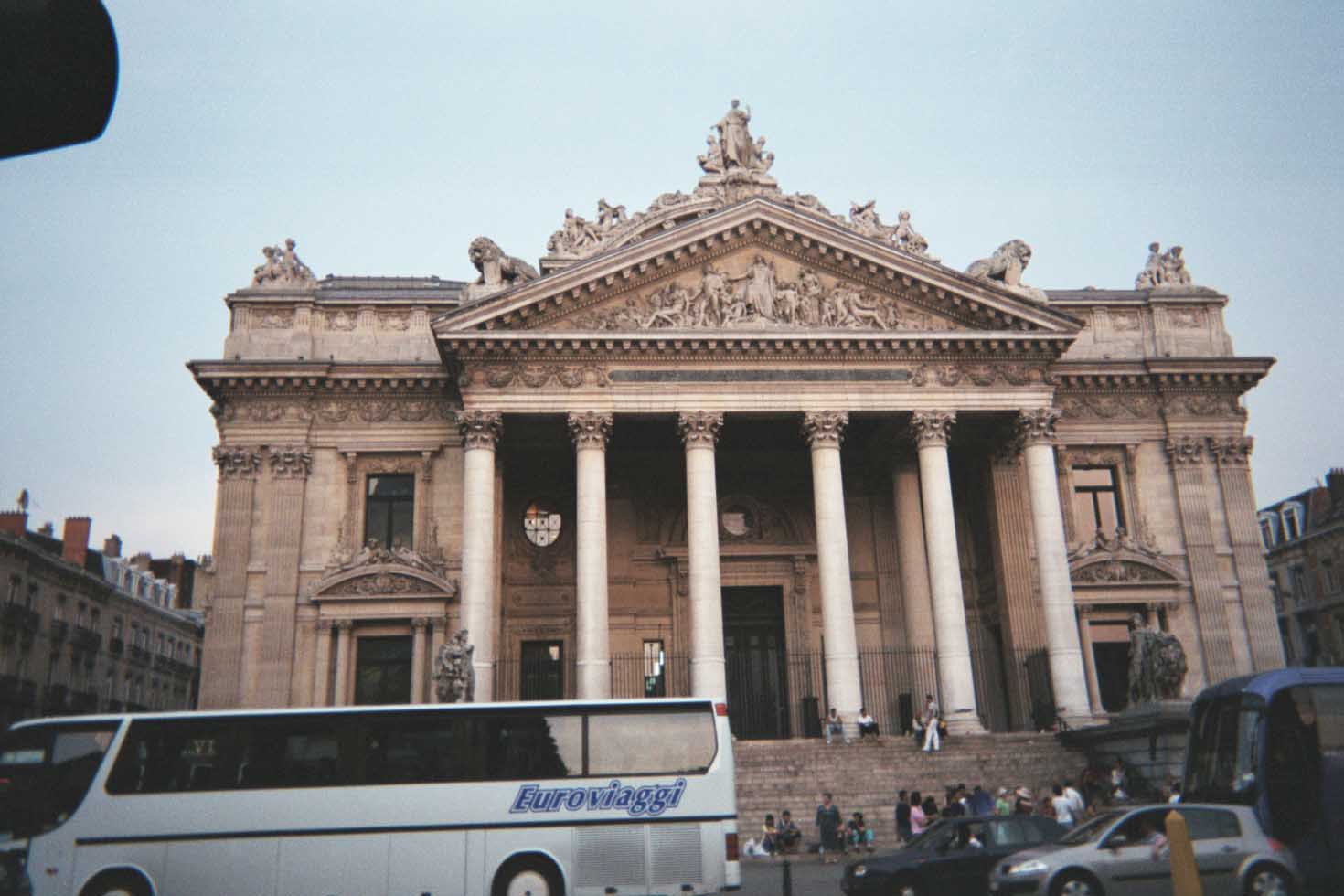 |
The Bourse (stock exchange) building in Brussels was built in 1873 in the classical
style. It is still in use as a stock exchange, albeit a minor one compared to London and
Frankfurt. |
| Brussels Cathedral is a superb
High Gothic building near the centre of the city.
This view of the West entrance gives an idea of its
huge scale. |
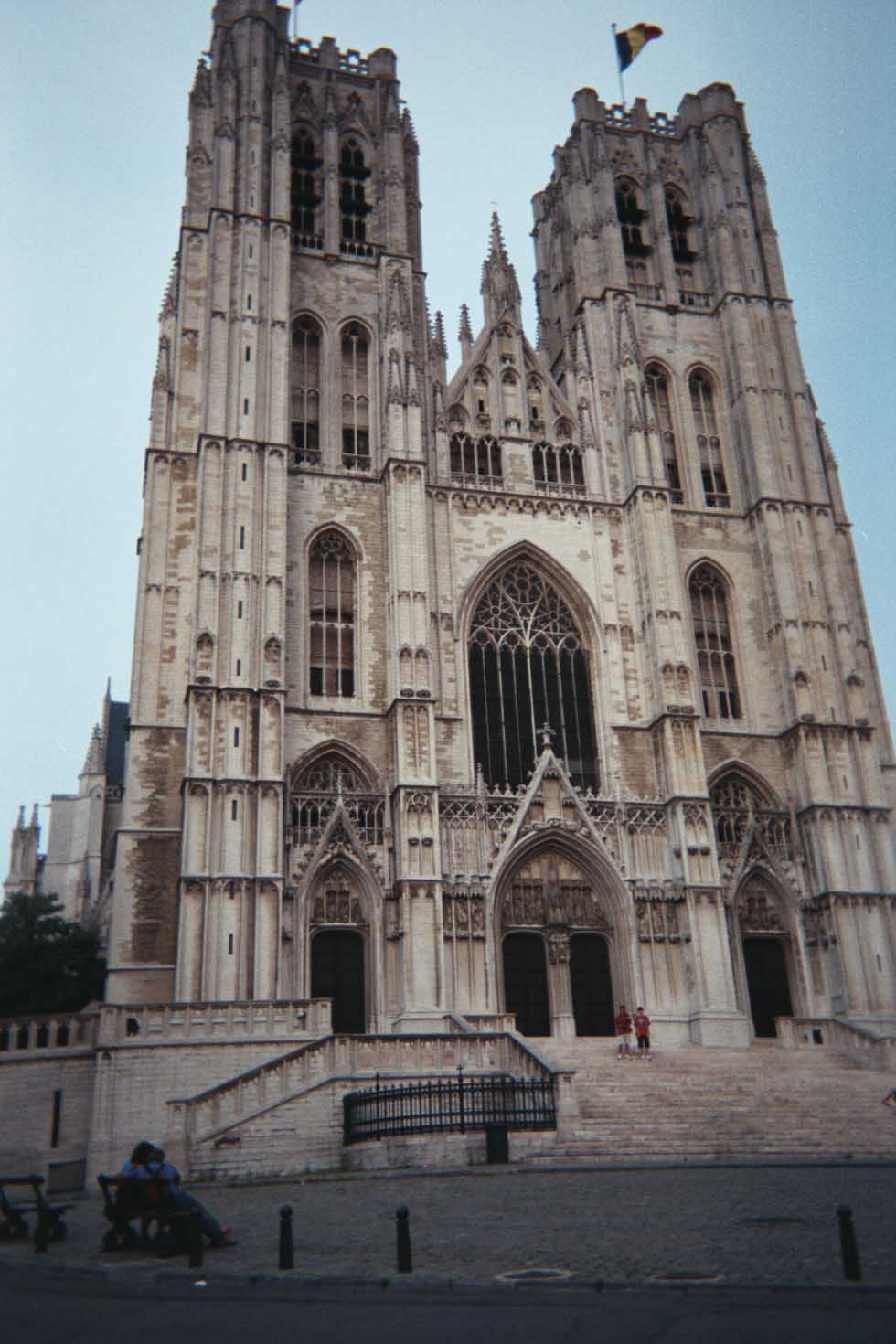 |
|
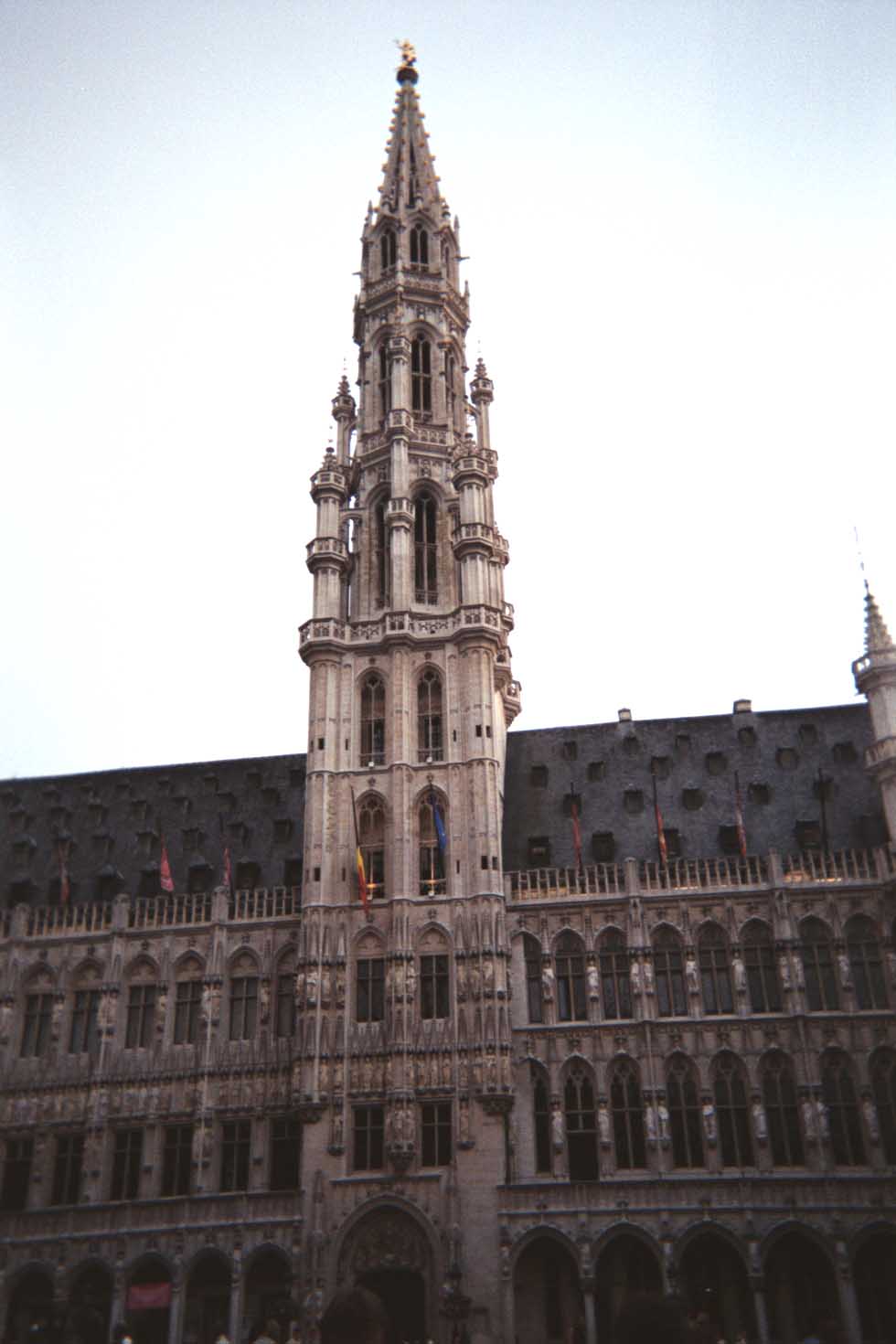 |
The Grand Place (Town Square) in
Brussels is composed entirely of superb mediaeval
buildings. The grandest is the Hotel de Ville (Town
Hall). It is very ornately decorated with hundreds of
finely detailed statues and other stone carvings. This
picture shows the spire and a general view of the
building. |
|
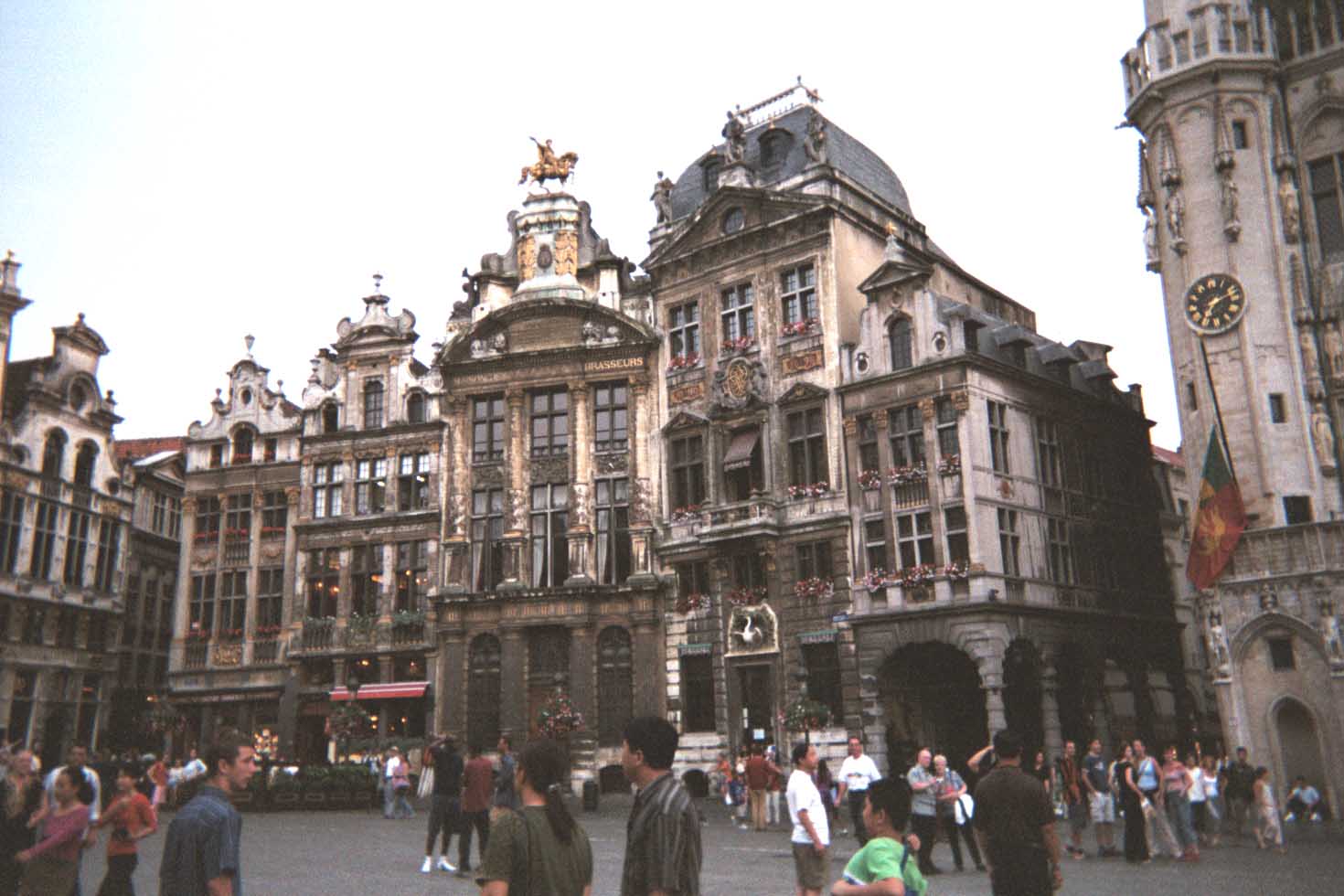 |
Most of the buildings in the Grand
Place in Brussels are old guild houses. These belonged
to specific trades such as wool-merchants, farmers,
tailors etc. Each vied with the others to produce the
grandest and most ornate guild house. This corner shows
some of the most richly gilded. |
|